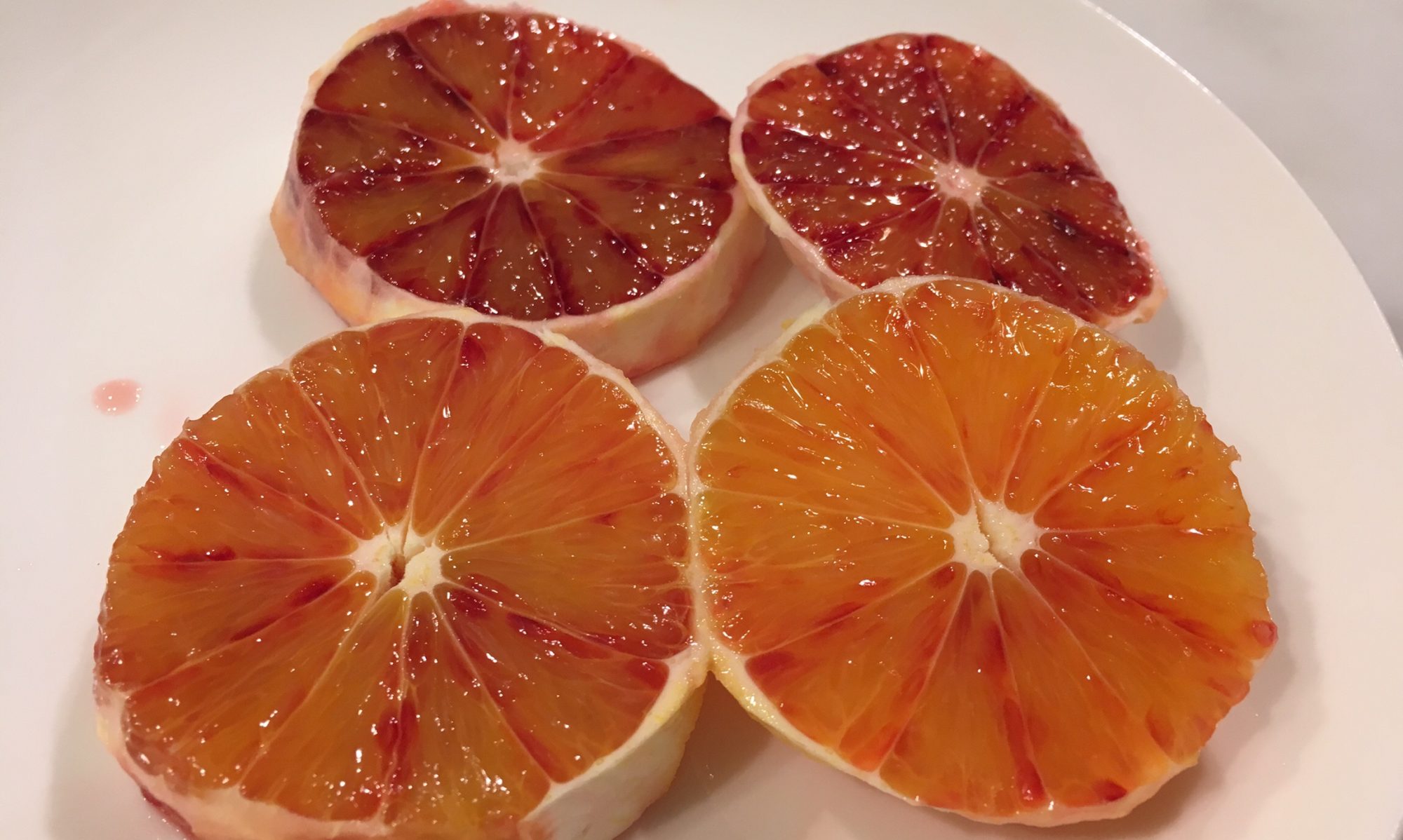
We sourced a few good looking artichokes at Natoora and I couldn’t resist turning them into a lightweight dinner! This style of dinner is very common around my home area as it won’t have you digesting heavy stuff for hours, and so you can sleep well.
Preparation
- First chop their stems, and also a few of the outside leaves (as they’re hard, have spiky bits and that’s not nice). Then cut them in halves:

Artichoke sliced in half - Put them all on a pan, add some oil and salt, and set them to a high heat
- Wait until they got some colour in one side. Then turn them around and brown them on that side too. If they’re cooking too fast and you fear they’ll burn, reduce the heat!
- Add some water – about a centimeter tall, cover, and bring to a boil. Then reduce the heat and let the artichokes soften in the water

- Once the water has evaporated, check the artichokes are soft (I just “lightly” punch them with a fork). If not, you can either add a bit more water and repeat the process, or keep them on a very low heat for longer.
- Done! Ready to eat!
In this case I served them with some escarole salad, tomatoes and cucumber, and just a touch of olive oil and balsamic vinegar. It is way more filling that you’d imagine, because the artichokes are so full of flavour, and the other vegetables were really high quality so it was a really sensational dish 🙂
Other ways to serve them:
- with toasted bread and olive oil. I would prefer wholemeal baguette style bread, but any good bread could work.
- with an omelette (possibly a simple egg one)
- with pan fried chicken breasts
Rambling time
Escaroles seem quite uncommon in the UK, but I grew up eating them during winter months, and I miss them, so I was very excited that Puntarelle & co had them in stock. The taste is quite different from your every day lettuce: peppery, spicy, a bit sour. I figured liking them is certainly an acquired taste because my very English partner didn’t like them at all! ?
In the same vein, finding good artichokes in London’s markets is quite the challenge. Forget supermarkets—I’ve never, ever, been able to find artichokes which were not weeeeell past their best times.
But it’s hard to tell from the outside because to know for sure you’d need to slice open the artichoke and see if it is still a bud, all green and undeveloped, and it has not started to turn into the bloom before the flower (which is what artichokes are, after all).
One way to test this is to gently squeeze the artichokes and see how they respond. They should be flexible; if they’re stiff it’s too late. But sometimes it’s hard to say…
Another way of testing is to use your nose: fresh artichokes have a very ‘green’ and characteristic smell. But this doesn’t work with supermarkets because the produce has been in a fridge for so long it just doesn’t smell of anything anymore. And shops tend to be cold as well, which doesn’t help with releasing aromas. So you could only use this in fresh markets.
When the flower develops, the “core” of the artichoke turns into stems and it’s absolutely vile to eat because it’s like eating spiky hairs that make a ball at the end of your throat. Urghhh. It’s also incredibly difficult to slice, as it hardens. I’ve lost count of the amount of artichokes I’ve had to throw away after I tried to salvage some of their contents ?
It is a complex problem that feeds itself:
- They are still a ‘weird’ vegetable and the demand is pretty low, so the food chain doesn’t prioritise getting good quality artichokes fast to the UK. And then they spend way too long in the shelves
- When people buy them and find a disgusting vile old artichoke they never buy them again, and so the demand keeps being low
- Back to step one ?
Still, I keep trying to find decent ones, because they can be so delicious!
Amusingly enough in Spain you can not only easily find artichokes, but even the stalks of the plant, called pencas, which are eaten in stews and salads. Nothing goes to waste!
